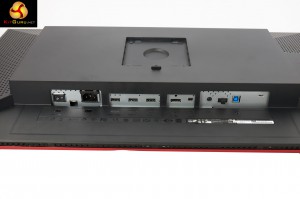All our photographs are taken in the KitGuru studio – we don’t use ‘stock’ images from the companies themselves – we want you to see what you get rather than what the manufacturer want you to see. The high resolution images on this page will take much longer to open due to the dimensions, especially on slower connections. If you use these pictures on another site or publication, please credit Kitguru.net as the owner/source.













Tags 4K IPS monitor Asus PA328Q Asus PA328Q ProArt Monitor Asus PA328Q ProArt Monitor Review Asus PA328Q review best 4k panel best IPS panel best ultra hd 4k monitor Review
Check Also
Reader Survey 2025 – Win one of THREE Sapphire RX 9070 XT graphics cards!
The KitGuru Reader Survey helps us understand what kind of products you are keen to learn more about in 2025/2026. It takes less than 5 mins to complete and it really helps us to target our editorial efforts. As a thank you to those of you who participate, we are offering the chance for you to win one of THREE brand new Sapphire RX 9070 XT graphic cards!
 KitGuru KitGuru.net – Tech News | Hardware News | Hardware Reviews | IOS | Mobile | Gaming | Graphics Cards
KitGuru KitGuru.net – Tech News | Hardware News | Hardware Reviews | IOS | Mobile | Gaming | Graphics Cards



It’s actually only twice the pixel density of a 1080p monitor of the same size.
You’re wrong and here’s why…
32″ is the diagonal measurement so effectively, 27.89″ × 15.69″
= 437.6in² 16:9
1080p = 68.84 PPI
2160p = 137.68 PPI
But wait, that’s only double? Wrong, this is the misinterpretation of pixel
density. If we were strictly talking about a straight line, then yes this would
be correct. However, because we are using a 2d plane for our viewing pleasure
it is in reality like this.
1080p = 4739 PPI²
2160p = 18956 PPI²
That’s right, the pixel density is correctly 4x that of 1080p. =D
The styling looks similar to the ROG Swift, nice! 🙂
◔❧❧◔❧❧◔I RECEIVED FIRST DRAFT OF $13000!@ak6:
,
➨➨➨➨https://QuickerAdvicehina.biz/learner/kits….
2X lineal density
4X areal density
People misunderstand how crucial it is to calculate the correct pixel density and use the linear form since the numbers are smaller making them easier to pick up on. But, we don’t just view screen in a straight line. Also, they’re not equally the same PPI Vertically as they are Horizontally. They differ slightly, but not by much to write home about.
“Factory pre-calibrated, industry-leading color accuracy with 100% sRGB and Rec. 709 color space support.”
its NOT UHD-1 Rec. 2020 real color space compliant so why would any consumer care to spend any money here when UHD-1/UHD-2 have their “basic parameter set” is defined by the “ITU BT.2020 standard” 10bit/12bit real colourspace, and not the antiquated Rec. 709 pseudo color space.
https://tech.ebu.ch/docs/events/webinar049_BeyondHD-update/hoffmann_beyondHD_update.pdf
http://www.bbc.co.uk/rd/blog/2013/06/defining-the-future-of-television
Defining the Future of Television
Posted by Andrew Cotton on 19 June 2013
…For those who’re not familiar with UHDTV its basic parameter set is defined by the ITU BT.2020 standard. The standard defines two UHDTV profiles – what’s commonly called UHD-1 at 3840×2160 pixels and UHD-2 at 7680×4320 pixels. The UHD-2 format was used for last year’s joint NHK/BBC public demonstrations of Super Hi-Vision during the London 2012 Olympics…..
Correct or to put it more simply:
HD 1920 x 1080p = 2,073,600 pixels displayed
UHD 3840 x 2160 = 8,294,400 pixels displayed
UHD is exactly 4 times HD (4 x 2,073,600 = 8,294,400) pixels
Not one of your better reviews guys. There is little mention of the HDMI 2.0 input which is a first on a monitor. Does it support chroma 444 across all inputs at 60hz 4k etc. We need details.